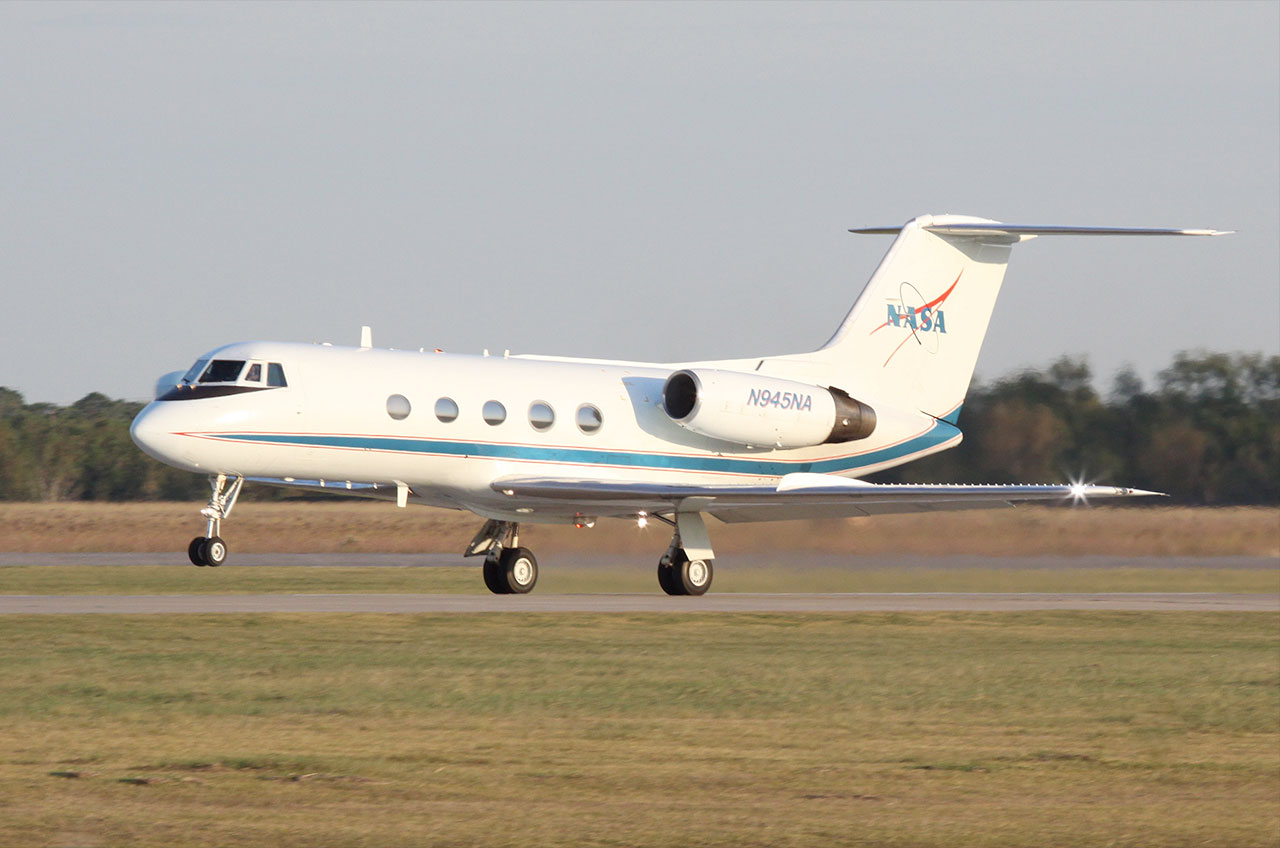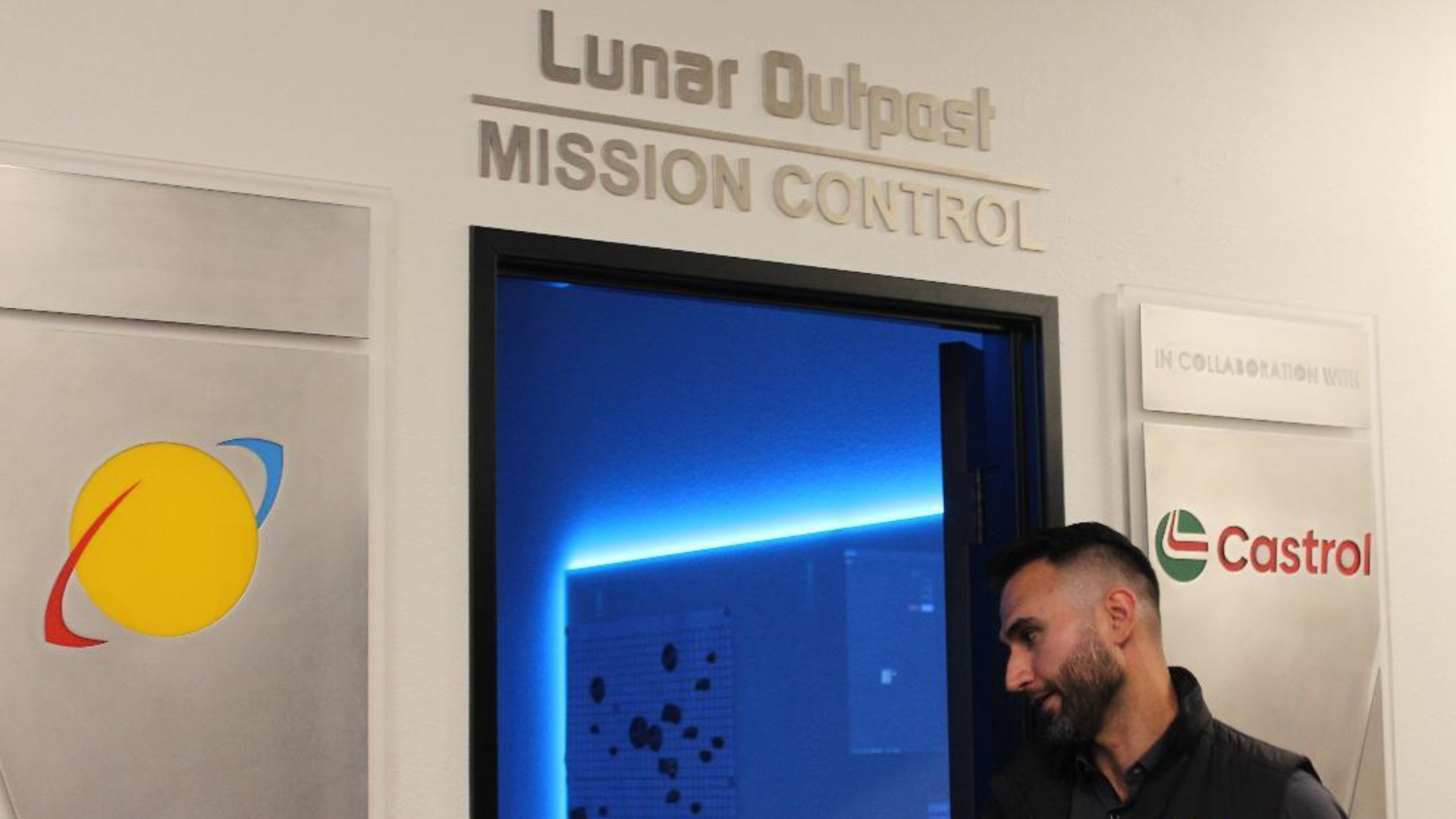Space Camp Launches Crowd-Funding Effort to Land NASA Shuttle Training Aircraft

One of four business jets converted to train NASA astronauts to land the space shuttle is on final approach to the Alabama home of Space Camp, pending the result of the U.S. Space & Rocket Center's first crowd-funding campaign.
The Gulfstream II (GII) Shuttle Training Aircraft (STA) will serve as a "museum exhibition and immersive classroom" at the Huntsville tourist attraction. Currently on the ground at Birmingham-Shuttlesworth International Airport, all that stands between the STA and its installment in the center's Shuttle Park are the funds needed to prepare its display.
"The U.S. Space & Rocket Center Foundation, along with the help of some amazing Space Camp alumni, are aiming to raise $70,000 for this project, the total cost of which is $192,000," Trevor Daniels, spokesman for the effort, said in a video posted on the "Land the STA" Indiegogo page. "The $70,000 that is raised through this campaign will go to support site preparation and structural supports needed to bring the aircraft to our site." [Video: Training for Landing: Can Shuttle Really be Simulated?]
To encourage donations, campaign organizers are offering key rings, bumper stickers, posters, t-shirts and patches featuring the "Land the STA" project logo. At higher pledge levels, donors receive flight suits, behind-the-scenes tours of the U.S. Space & Rocket Center, lifetime memberships at the museum or even reservations to attend adult/family Space Camp. [See the “Land the STA” project logo]
How they trained
The fleet of four Shuttle Training Aircraft was a critical tool for training the astronauts who would land the shuttle. The orbiter, sometimes referred to as a "flying brick," returned from space as an unpowered glider and so had just one go at landing, with very little margin for error.
As such, shuttle commanders and pilots would normally fly around 1,000 approaches in the STA leading up to their mission. The aircraft was modified to perform in flight as the orbiter would on returning from space, including having half its cockpit replaced with the same controls as on the space shuttle's flight deck.
Breaking space news, the latest updates on rocket launches, skywatching events and more!
"The Gulfstream G-II was ... a business jet and it was a wonderful one at that," Jim Halsell, a five-time shuttle pilot and commander, said in a "Land the STA" project video. "But NASA took the airplane and completely gutted it of all the interior appointments that one would expect to have in a business transportation airplane."
"In the cabin we had instead a very large computer," he said. "That computer turned the airplane into a fly-by-wire test and training airplane that allowed it to fly exactly like the space shuttle."
When the 30-year shuttle program ended in 2011, NASA no longer had a need for the STA fleet. The space agency donated the aircraft with tail number N945NA (NASA 945, for short) to the U.S. Space & Rocket Center in 2012.
The other three aircraft were retired to NASA's Armstrong Flight Research Center in California (944), the Texas Air & Space Museum in Amarillo (946) and Evergreen Aviation & Space Museum in Oregon (947).
"It's going to be a legacy that I hope a hundred years from now kids come in and look at it and say, 'Gee, that's how they trained,'" Hoot Gibson, a five-time space shuttle pilot and commander, said.
Shuttle trifecta
The U.S. Space & Rocket Center has a two-part plan for displaying the Shuttle Training Aircraft.
The first phase for the STA's exhibit includes installing the aircraft, building a mock runway leading up to the display, raising a canopy to protect the vehicle from the elements and adding a staircase that will allow the public to explore the interior of the aircraft.
"The U.S. Space & Rocket Center plans to exhibit the G-II in Shuttle Park, along with our full shuttle stack featuring the Pathfinder orbiter and our recently acquired T-38 [jet]," Daniels explained. "These three vehicles represent a kind of 'shuttle trifecta,' where the T-38 and G-II were used by astronauts to train for flying the orbiter."
The exhibit's second phase calls for an amphitheater to be built underneath the STA's wingspan.
"This will be an iconic venue for educational presentations and demonstrations, Space Camp and Aviation Challenge graduations and special events," project officials wrote on the Indiegogo website.
The crowd-funding campaign began on Tuesday (March 4) and will run for 60 days (May 3). As of Friday morning, the "Land the STA" project had elicited more than $16,000 in donations toward its $70,000 goal.
To learn more or to donate to the campaign, see the "Land the Shuttle Training Aircraft" website at: www.rocketcenter.com/sta
Follow collectSPACE.com on Facebook and on Twitter at @collectSPACE. Copyright 2014 collectSPACE.com. All rights reserved.
Join our Space Forums to keep talking space on the latest missions, night sky and more! And if you have a news tip, correction or comment, let us know at: community@space.com.

Robert Pearlman is a space historian, journalist and the founder and editor of collectSPACE.com, a daily news publication and community devoted to space history with a particular focus on how and where space exploration intersects with pop culture. Pearlman is also a contributing writer for Space.com and co-author of "Space Stations: The Art, Science, and Reality of Working in Space” published by Smithsonian Books in 2018.
In 2009, he was inducted into the U.S. Space Camp Hall of Fame in Huntsville, Alabama. In 2021, he was honored by the American Astronautical Society with the Ordway Award for Sustained Excellence in Spaceflight History. In 2023, the National Space Club Florida Committee recognized Pearlman with the Kolcum News and Communications Award for excellence in telling the space story along the Space Coast and throughout the world.

